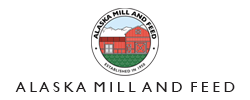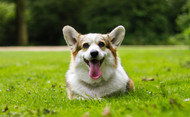Two Ways to Help a Dog Lose Weight | Alaska Mill & Feed
Posted by Kimberly McCourtney on Dec 4th 2020
Maintaining a dog’s ideal weight is one of the most important things we can do to help our dogs live long, active and happy lives. Currently 25-30% of dogs in the U.S. are overweight. As owners, if we adopt a few simple principles, we can help our overweight dogs lose and then maintain their ideal weight.
1. CONTROL CALORIES AND FAT:
Limit calories while meeting nutrition requirements. Most healthy dogs can benefit from foods with:
- Higher than average amounts of digestible protein - to prevent lean muscle loss.
- Lower calories from fat - calculated to contain 75%-85% of the calories needed to maintain ideal body weight.
- Higher than average fiber - facilitates weight loss, helps control blood sugar.
- Added glucosamine and chondroitin - for joint health.
- Added L-carnitine - plays a role in fat metabolism, controlling blood sugar levels and helping maintain and develop lean muscle mass.
Increase the proportion of canned and raw foods in the dog’s daily diet. Feeding only canned or raw foods has been shown to help dogs lose weight.* A ratio of 50% wet food to 50% dry works well, but as little as 25% wet food can be beneficial.
Measure food and feed smaller, more frequent meals. Consider the dog’s activity level and the feeding guidelines on the bag of food to calculate how much the dog needs each day. Put a measuring cup in the bag to avoid over-feeding. Divide the amount of food into smaller meals, and feed two to three times a day.
Limit the dog’s access to food for other animals in the household. Overweight dogs are usually experts at scarfing up cat food and any leftovers from other dogs in the house. Consider putting cat dishes out of reach of the dog. In multi-dog households, try feeding each of the dogs in separate bowls, out of sight of each other. Pick up the food bowls after 15-30 minutes, even if food is left.
Talk to a veterinarian. Consult with a veterinarian to rule out underlying conditions that can influence weight, such as age, diabetes, and thyroid disease.
Reduce weight slowly. Weight loss should occur at a rate of no more than 1-2% of the dog’s total body weight per week.
*Kane, Ed. “Is Your Dog Overweight.” Pet Place, 2009.
2. PLAY MORE, TREAT LESS
Studies show that owners of normal weight dogs play with their dogs more often than owners of overweight dogs.
Find their play preferences: When choosing a toy or a play routine for weight loss, consider behaviors the dog is more likely to enjoy. Some suggestions:
| BREED | SENSE OF DUTY | GAME, ACTIVITY OR TOY |
| Hunting Breeds: Retrievers, Spaniels Standard Poodles | Retrieving Game | Fetch, swimming, Walking, Hiking |
| Hounds: Beagles, Dachshunds, Bassets | Scent Tracking | Puzzle Toys, Chase or Fetch |
| Herding Breeds: Collies, Shepherds, Corgis, Heelers | Protecting Livestock | Flying Disc, Herding, Agility |
| Terriers: Jack Russel, Scotties, Staffordshire, Airedales | Companion | Tug, Digging or Puzzles, Obedience |
| Toys: Pekingese, Chihuahuas, Maltese | Companion | Squeaky Toys, Tricks and Games |
Increasing a dog’s activity burns calories, increases muscle development and helps dogs lose weight.
- Very overweight dogs may need time to develop the stamina for exercise. Most dogs can maintain proper body weight with a brisk 20-30 minute walk, just twice a day.
- Off-leash parks and dog daycares are great ways for dogs to exercise off-leash and learn to socialize.
- Introducing new toys and games into a dog’s daily routine can decrease boredom, improve coordination and help dogs bond with their human family.
Dogs make good workout partners. A recent Northwestern University study indicates that dogs and people can help each other lose weight.
Limit extra calories from snacks and treats. As a rule, no more than 10% of the day’s calories should come from treats, leaving 90% or more of the calories from nutritionally balanced food
- Use smaller-sized treats that are low in calories and fat, with minimal carbohydrates, such as mini-biscuits or 100% meat treats.
- Earning a treat from a person seems much more important than the treat’s size to most dogs. Ask the dog to do something to earn the treat each time one is given, so play becomes part of the treat giving.
- Reward with nutritionally balanced treats. Dry food kibble, dehydrated food cubes or dog food roll slices can be used as nutritionally complete treats.
- Replace food rewards for good behavior with play and positive reactions and attention.

